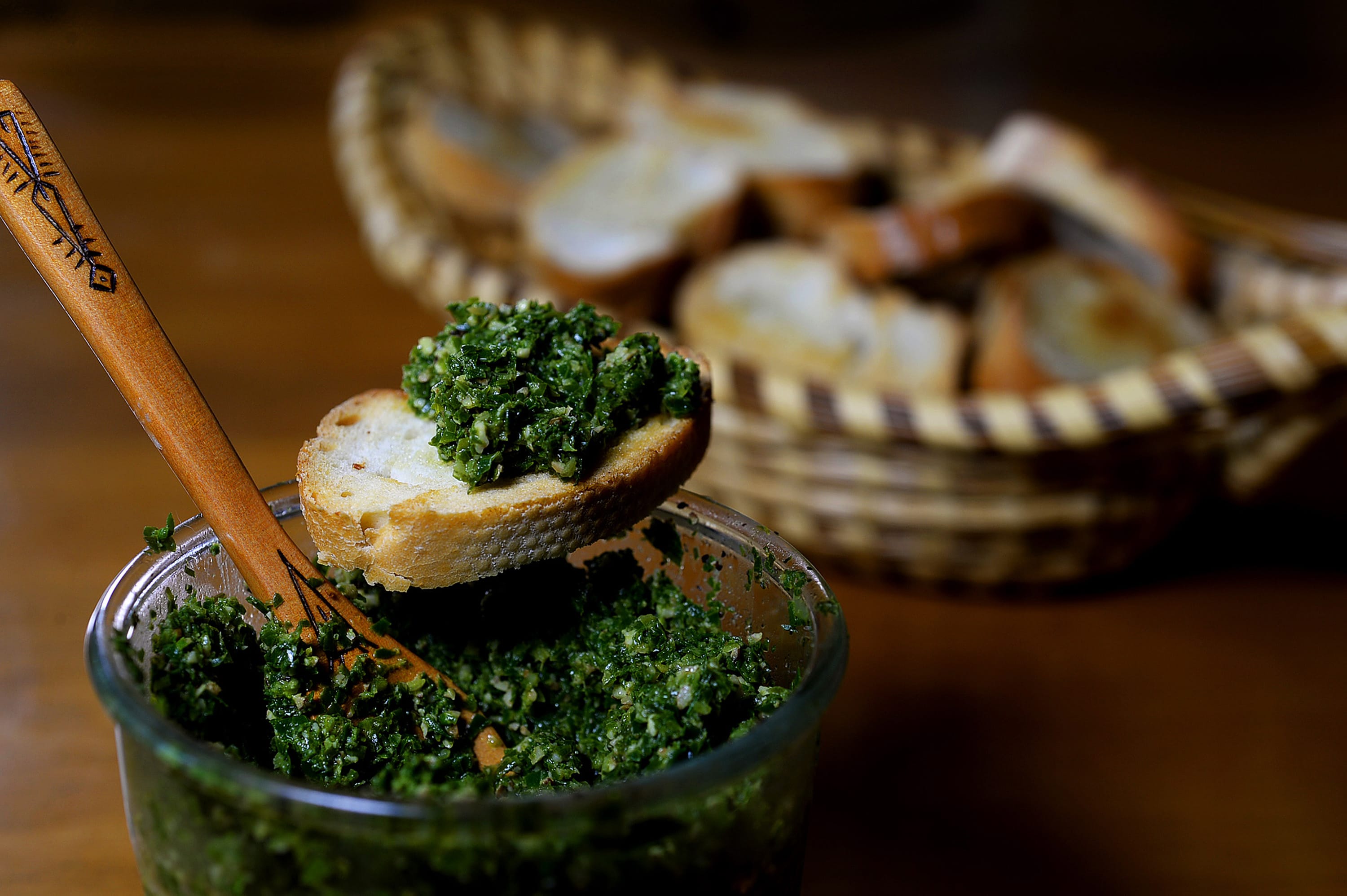Refrigerate and serve at room temperature.
Collard Cobb Salad
Yield: About 6 servings.
Adapted from “Southern Made Fresh,” by Tasia Malakasis (Oxmoor House, 2015).
2 bunches of collard greens, trimmed (about 6 cups)
2 cups cherry or grape tomatoes, halved
4 hard-cooked eggs, peeled and diced
2 ripe avocadoes, peeled and diced
1/2 cup pecan halves, toasted in a dry skillet
1/2 cup (about 6 slices) bacon, cooked and diced
2 ounces crumbled blue cheese
Creamy Lemon Dressing:
1/2 cup fresh lemon juice (about 2 lemons)
1 teaspoon kosher salt
2 cloves garlic, minced
2 teaspoons Dijon mustard
1/2 cup olive oil
Whisk together the lemon juice, garlic and mustard. Whisk in the olive oil. Refrigerate until ready to use.
Place the greens in a large salad bowl. Add the tomatoes, diced egg, avocado, pecan halves, bacon and blue cheese. Toss well to mix. Drizzle with enough dressing to moisten it all, then toss again. Serve with any extra dressing on the side.
Blue Collard Dip
Yield: About 6 cups.
This may be the perfect tailgate-season dip, and you can use it right through New Year’s. We adapted it from Edible Piedmont magazine, which got it from Mindy Ballou Fitzpatrick of The Friendly Market in Morehead City, N.C.
1 to 2 tablespoons vegetable oil
1 to 2 yellow onions, peeled and sliced
6 to 8 slices bacon
2 cups cooked, chopped, drained collards (see note)
1 (14.5-ounce) can fire-roasted diced tomatoes, or 1 cup slow-roasted tomatoes, chopped
1/2 cup blue cheese crumbles
1 tablespoon kosher salt
1/2 tablespoon freshly ground pepper
1 tablespoon Texas Pete hot sauce
1/2 cup grated Parmesan cheese
8 ounces softened cream cheese
1/2 cup mayonnaise
1/4 cup sour cream
Warm the vegetable oil in a skillet with a lid and stir in the onion. Cover and cook slowly over low heat, stirring occasionally, until the onions are very soft and caramelized. (Can be made in advance and saved to finish the dip.)



